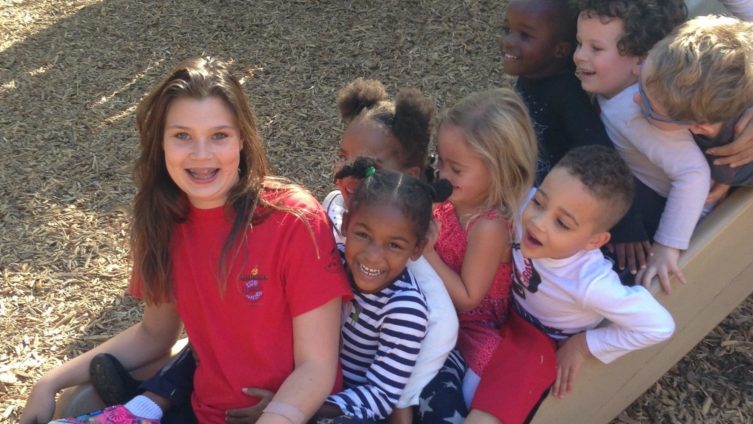
By Allen Broyles (assistant head of school) and Morgan Darby (director of student life and inclusion)
Throughout 2016, a group of 55 teachers, parents, board members and Atlanta community members convened for an in-depth strategic planning process. Part of the group’s charge was to determine whether or not TCS should extend through eighth grade. As we weighed the possibility, two questions were foremost in everyone’s mind: Is this best for our students? and Does this fit within our mission as a school that honors children and childhood?
Overwhelmingly, the strategic planning group said yes to both questions and agreed that 14 year-olds, while well on the way to developing their eventual adult skills, are still within the fold of childhood. Supporting this strategic move is a body of research that shows that middle grades children in early learning through eighth grade programs show benefits over their counterparts in stand-alone middle schools or in middle schools attached to high school programs. Among these advantages are better support for the critical processes of identity development that occur at this age, stronger development of leadership abilities, and a more supportive social and emotional environment that develops more confident, self-possessed ninth-graders. As if those benefits weren’t enough, students in early learning through eighth grade programs perform better academically as well.
What Should It Look Like
In early learning through eighth grade models, Middle Grades students step into the role of being the oldest and have more opportunities to practice leadership skills. Younger kids look up to the older kids, which gives them the experience of being seen as a leader as well as the sense of responsibility for modeling for the younger kids. Having the continuity and community of teachers, advisors, and mentors creates a support system that helps relieve the the stress of stepping into new challenges.
All of us remember the social-emotional turbulence of our middle school years. One of the reasons for this is that challenging experiences during that period etch themselves more durably into our psychologies than the same challenges in younger or older years. Said simply, Middle Grades students are more vulnerable to difficult circumstances. Early learning through eighth grade models help with this significantly for a number of reasons. First, students have a “top-dog” experience compared to students in standalone middle schools or sixth through twelfth grade schools. They are looked up to by younger students, and have many more opportunities to practice leadership across the school. In addition to being looked up to, they are not in proximity to high school students, and thus aren’t aspiring to things they see for which they are not ready. They remain children longer. This comfort helps them stretch and develop competence and confidence, free from the worry of potential judgement from older adolescents. And for a school that values play, our students in our early learning through eighth grade program can be freer to be fun, silly, funny — in short, kids. Add to this a curriculum structure that supports social-emotional development with advisories, project-based learning, and a strong strand of socially collaborative learning, and you have the elements that allow kids of this age to thrive.
Choosing to be at a school for three-year-olds to fourteen-year-olds offers students a unique gift of time to be known and to be safe in that knowing, without interrupting this critical developmental period with a school change. This benefit of time assists not only the children as growing and developing students, but time also benefits their adult caregivers. Whether that be parents, grandparents, teachers, coaches, mentors, and extended family, we each play a vital and consistent role in the partnership, care, and instruction developing for each child.









